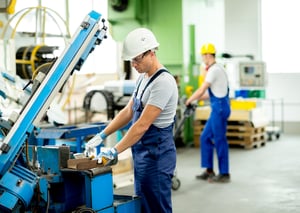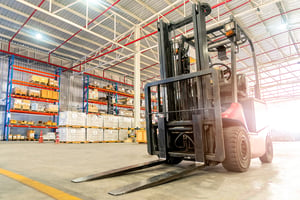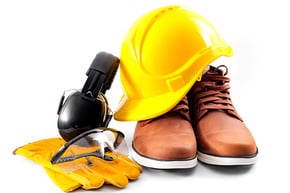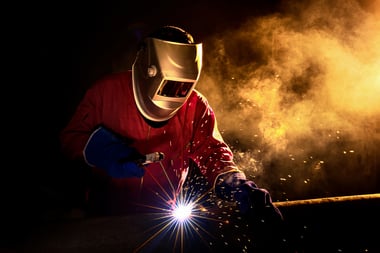Safety is a critical part of any operation but it is especially important in a manufacturing environment. In manufacturing, there are many aspects of the process that can present safety concerns for employees if proper procedures are not managed and maintained. There are regulations for safety that need to be followed in order to provide a safe and productive working environment for employees and to prevent OSHA fines and penalties. In addition, poor safety can result in rising insurance costs, increased workmans’ compensation claims and medical expenses.
Let’s talk about a few common safety issues and how to best prevent them from becoming a liability in a manufacturing operation.
Falls
Experienced plant employees often develop a sense of over-confidence when it comes to following safety procedures. It is important to remember that a manufacturing plant can be a dangerous place when proper procedures aren’t followed. Falls are one of the most common hazards in a manufacturing facility. Falls can occur because of wet surfaces that are not maintained or because of not following safety protocols when operating high climbing equipment. By communicating to employees and managing their abilities through spot checks and reinforcing expectations, safety procedures can help keep employees safe.
 Heavy Machinery and Tools
Heavy Machinery and Tools
Large machinery can be hazardous when it is not operated properly. The same can be said for many of the large and small tools and equipment in and around a manufacturing facility. Proper training is the first step in proper machine operations. Manager follow up and using safety checklists before operating equipment can also be helpful in promoting a safe working environment. A common way to promote machine safety is the use of machine guards in key areas of the machine to prevent improper operation. Machine guarding around the entire machine may also be a way to promote safety. This prevents humans from inadvertently approaching the machine area and putting themselves in harm’s way while a machine is operational.
 Industrial Vehicles
Industrial Vehicles
Wherever industrial vehicles operate, safety can potentially be compromised. Again, overconfidence can be a factor in this. Vehicle operators get comfortable and that complacency can have dire consequences. Operators should always be away of their surroundings and of the people around their equipment. Safety strapping should always be in place and operators should be careful and detailed when it comes to operating in an area with others. They should also be very focused when it comes to maintaining their own safety. One wrong move can have a lifetime of consequences and can also result in damage to shelving, shelving collapse and more. These possible outcomes can damage a facility’s ability to operate which effects everyone in the operation. Spot checks, safety checks and operator follow up training and awareness are important ways to prevent the worst from occurring when it comes to operating industrial vehicles in a manufacturing operation.
 Chemicals
Chemicals
There are many chemicals used in an industrial manufacturing operation. These chemicals can be a major safety hazard when they are improperly used. Chemical containers should be clearly labeled with safety instructions as well as instructions on how to provide treatment for exposure. Storage procedures for chemicals should also be clearly outlined so everyone is aware of the proper procedure for dealing with chemicals. Training and follow up when it comes to safety procedures for chemicals are both very important and very useful for promoting safety.
 Arc Flash
Arc Flash
Welding arc flash is a burn of the outer layers of the eye caused by ultra-violet radiation generated by welding. Arc flash is like sunburn on an eyeball. A common cause of arc flashes in the industrial industry is caused from looking directly at a welding operation without wearing protective eye gear. This type of injury is sometimes referred to as welder’s eye. The best way to promote safety and prevent this type of injury is to have a barrier set up between the welding operation and those who may be exposed to it. This barrier is a welding curtain that shields the welding operation from those not wearing protective eye wear. Welders or anyone who will be in a welding operation area should wear a welder’s helmet as eye protection. This is the best way to prevent arc flash injuries.
Safety is an ongoing part of a manufacturing operation. Although each person may have varying responsibilities, when it comes to maintaining a safe working environment, it is everyone’s job to contribute to making work a safe place to be.
Download your safety e-book today
To learn more about Radwell International


